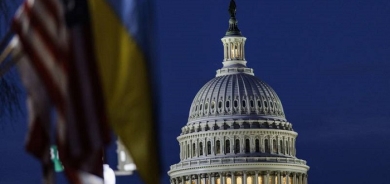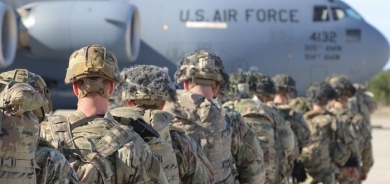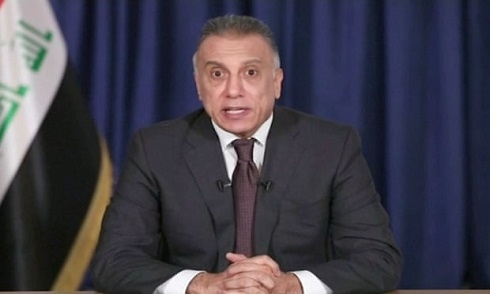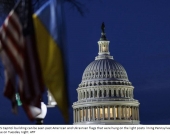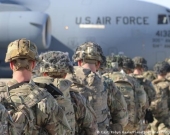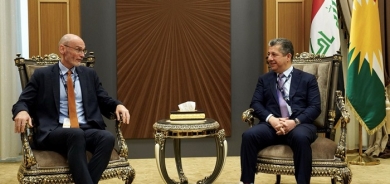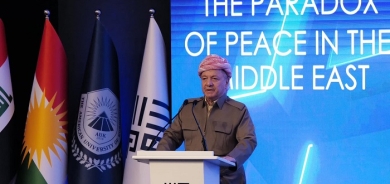The Kurdish momentum in the Middle East
May 27, 2013
From Media

The Kurds are now on the map, but much depends on them if they manage to use momentum to alter the geopolitical map to their own advantage.
Writing in the aftermath of the 1990 Gulf war about the Kurds of Iraq, Turkey and Iran, David McDowall was quite pessimistic about the prospects of Kurdish nationalism, saying: “One must doubt whether Kurdish nationalism can ever prevail against three hostile governments willing to apply ruthless methods to contain the challenge.”
Paradoxically enough, McDowall’s assumptions were based on his intimate knowledge of Kurdish history, which taught him that the 20th century was indeed one of the worst periods in the Kurdish people’s annals. However, events at the turn of the 21st century tell a different story: The convergence of regional and international transformations together with the crystallization of a strong national movement in Greater Kurdistan made the crucial difference between the two eras.
To evaluate these tectonic changes one should examine them against the background of the changing paradigms among the Kurdish, regional and international players and to highlight the causes for these changes.
CHANGING PARADIGMS The image and self-image of the Kurds in the 20th century was that they were the ultimate victims of modern history; that “they have no friends but the mountains”; that they are inclined to tribalism and fratricide; and that they are passive actors being cards to play with by others. However, by the beginning of the 21st century they have metamorphosed from victims to proactive players and game-changers in the region. Moreover, the Kurds have managed to internationalize their cause and mobilize support in Europe and other parts of the world.
In the past the Kurds lent themselves to the central government’s policy of divide and rule both between the Kurds within one state as well as between Kurds of the different countries. The most glaring examples were the progovernment Kurdish auxiliary, the juhush in Iraq and the korucu in Turkey who fought against their Kurdish brethren, or the PKK of Turkey which fought against The KDP of Iraq. Now it seems quite unlikely that a new civil war among the Kurds will occur.
The dynamics of the 20th century were such that there were fears that the achievements of one part will be at the expense of the others. This may no longer be the case. In spite of ongoing rivalries and competitions the achievements of one part may empower the others since now, the borders are porous, and the mutual influences are much quicker and profound than before. There is now also a Kurdish center in Iraq.
Concurrently with the changes among the Kurdish players there were changes in the states themselves. The ethos of the nation-state has suffered a severe blow. Iraq is split into two parts, the Arab part and the Kurdish part, where a quasi-state was established. In Syria the collapse of the state triggered the establishment of a Kurdish autonomous region resembling in a way the Kurdish autonomous region established in Iraq in 1992. In Turkey the state had to give up the idea of a Turkish state for Turks and is now conducting a peace process with its fiercest enemy, the PKK. As to Iran, behind the façade of a nation-state, the non-Persian ethnic groups, most importantly the Kurds, are only waiting for a trigger to challenge this hegemonic state.
Throughout, the states attempted to delegitimize the Kurdish national movement by labeling it a terrorist organization that should be put down by force. Recently, however, they began to internalize in the most agonizing way that it is in fact a national movement with which they should find a modus vivendi. Similarly, until not too long ago the states cooperated with each other against the Kurds. Now this seems almost impossible due to the transformations in the region and the changing geopolitical map. The most glaring example is that Ankara forsook its longstanding anti-Kurdish alliance with Baghdad for the sake of an alliance with the KRG against Baghdad.
At the same time there were changing paradigms in the international arena as well. In the 20th century the Kurdish issue was considered a domestic problem in which the international community and international organizations were reluctant to interfere. However, by the beginning of the 21st century this taboo was broken. In Iraq, for example, many countries are developing relations with the KRG against the will of Baghdad.
With regard to Turkey the solution of the Kurdish domestic issue became part and parcel of the EU’s condition for accepting Turkey into its fold. In other words there formed a Gordian knot between Turkey’s relations with the EU and the Kurdish domestic issue. In Syria too the PYD, the leading Kurdish party, which controls the autonomous region, had managed to publicize the Kurdish cause in Europe where its leaders are personae grate in many capitals. Interestingly, unlike the PKK, its mentor, the PYD is not considered a terrorist organization either by the EU or the US.
Another important development was that at the turn of the century the international community no longer upheld the notion of the sanctity of borders.
Thus, between 1990 and 2010 the number of states in the world grew from 151 to 192, most of which arose through secession. Thus, it is possible to say that in the 21st century there has been legitimization of new entities and states.
THE CAUSES FOR THE CHANGE The main trigger for the change was the coming of the Americans to the region in 2003, namely the war on Iraq, and their departure at the end of 2011.
This American move can be compared to the coming of the British to the region in the aftermath of World War I.
The common denominator in the two cases is that they triggered the opening up of the region’s geopolitical map – with one major difference, namely that in the American case it was an unplanned consequence of the war on Iraq.
The other important causes for the change were the three interrelated revolutions, namely the revolution of the new media, the Arab revolutions, and the Turkish revolution with regard to its relations with the Kurdistan Regional Government and its capital, Irbil.
Turkey’s revolutionary conceptualization of the KRG may be described thus: While in the past Irbil was perceived as part of Turkey’s internal Kurdish problem, now it is being perceived as a partner to a possible solution. No doubt economic interests were a main driving force for Turkey’s new approach.
Linked to this is the attractiveness of Kurdistan to the outside world because of oil and gas. While the prospects of finding oil in the Kurdistan region had at the end of World War I moved the British to annex the oil-rich Kurdistan region to Iraq, the attraction of this same oil to global companies has assisted the Kurds, maybe unintentionally, to begin disengaging from Iraq in the 21st century.
Another crucial factor is the role of the Kurdish diaspora, which is becoming engaged, politicized and a power to be reckoned with in the articulation of Kurdish nationalism and its goals. Yet, the most important factor is the growing assertiveness and cohesion of Kurdish nationalism in Greater Kurdistan.
AT A CROSSROADS, YET AGAIN The situation of the Kurds at the beginning of the 21st century resembles to an extent that of the early 20th century. In the aftermath of World War I and the division of the Kurdish homeland into four parts the Kurds were at a crossroads.
Will they be granted independence as promised in the Treaty of Sevres? Will they have autonomy in the new Turkish state as promised by Kemal Ataturk, or will they be assimilated in the emerging new states? The latter alternative was the one which they did not choose but that was imposed upon them by the states for the next 80 years.
At the turn of the 21st century the Kurds are standing yet again at a crossroads, facing similar dilemmas and question marks. Will they have independence in the Iraqi part? Will they have an enduring autonomy in Syria? Or will they resign themselves to being equal partners in the Turkish and Iranian states? For all the similarities there are huge differences between the two eras.
While in the first case they were divided and separated, now the borders and the dividing lines are blurred. While in the first case other forces and players were acting upon and deciding for the Kurds, now the decision making has gradually shifted to the Kurds. While in the first they were cut off from the outside world now they are much more visible and vocal.
Without purporting to predict the future, the following conclusions seem fairly certain: The pace of progress is likely to be different in each of the parts of Greater Kurdistan, but the synergistic effect will continue to reverberate.
The KRG is expected to move forward toward independence. As for the Kurds of Syria, they stand to hold on to their autonomy because they are much better organized than the other groups and because of their fait accompli on the ground.
Regarding the peace process between Turkey and the Kurds, it might face a lots of ups and downs, because the Turkish public is not ready yet to accept the notion of Kurdish nationalism, because the government might use the Kurdish card for tactical reasons and because the Kurds themselves are quite bewildered with the sudden changes and do not have clear-cut goals. Whatever the results of the peace process, it will be difficult to turn back the wheel on it. As to the Kurds of Iran, they are greatly influenced by the developments in the other parts but they are waiting for the tectonic shift to reach Iran.
All in all, the Kurds have learned in the hard way how to deal with governments and not be solely the proverbial card manipulated by them. The Kurds are now on the map, but much depends on them if they manage to use this momentum to alter the geopolitical map to their own advantage.
The author is senior research associate at the Moshe Dayan Center at Tel Aviv University.
She is the author of The Kurds of Iraq: Building a State within a State.
The Jerusalem Post

